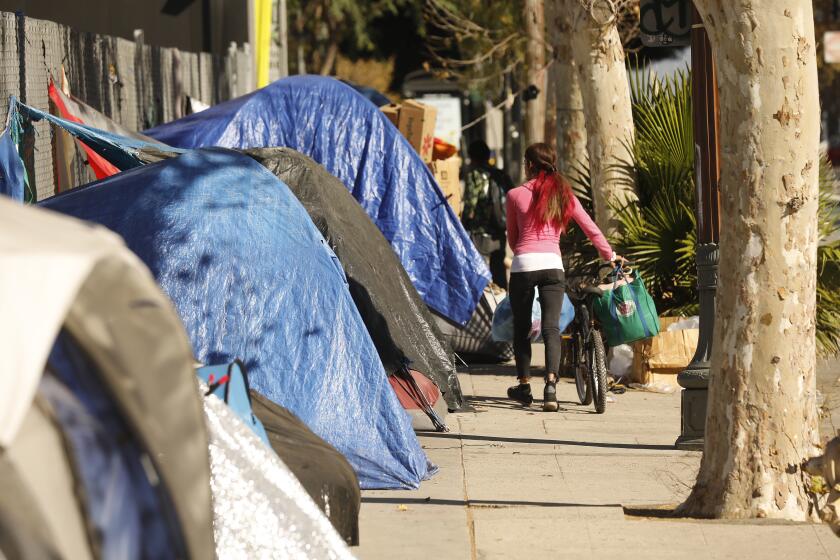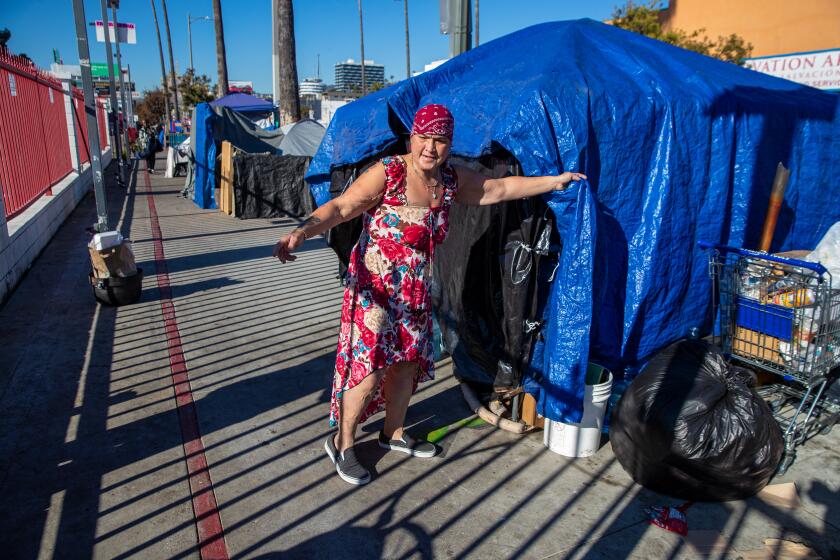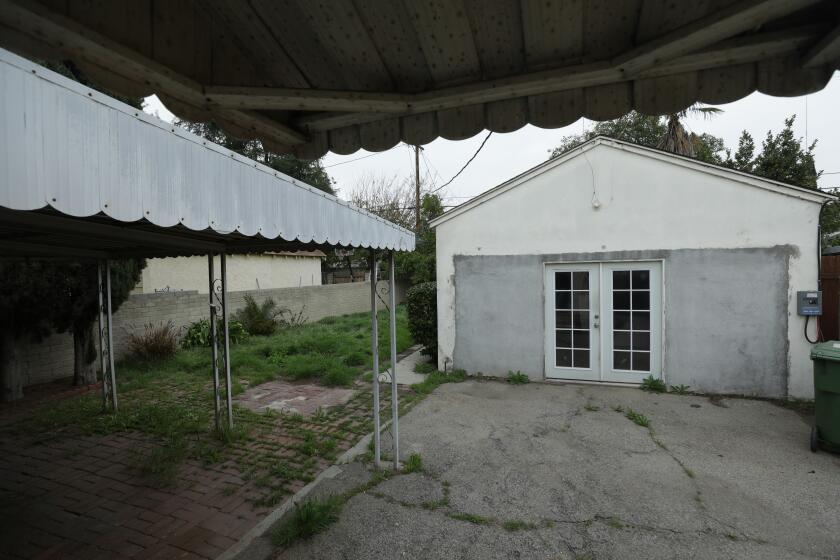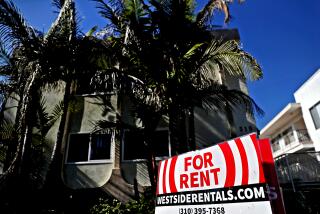Editorial: L.A.’s eviction moratorium will end, but tenant protections should continue
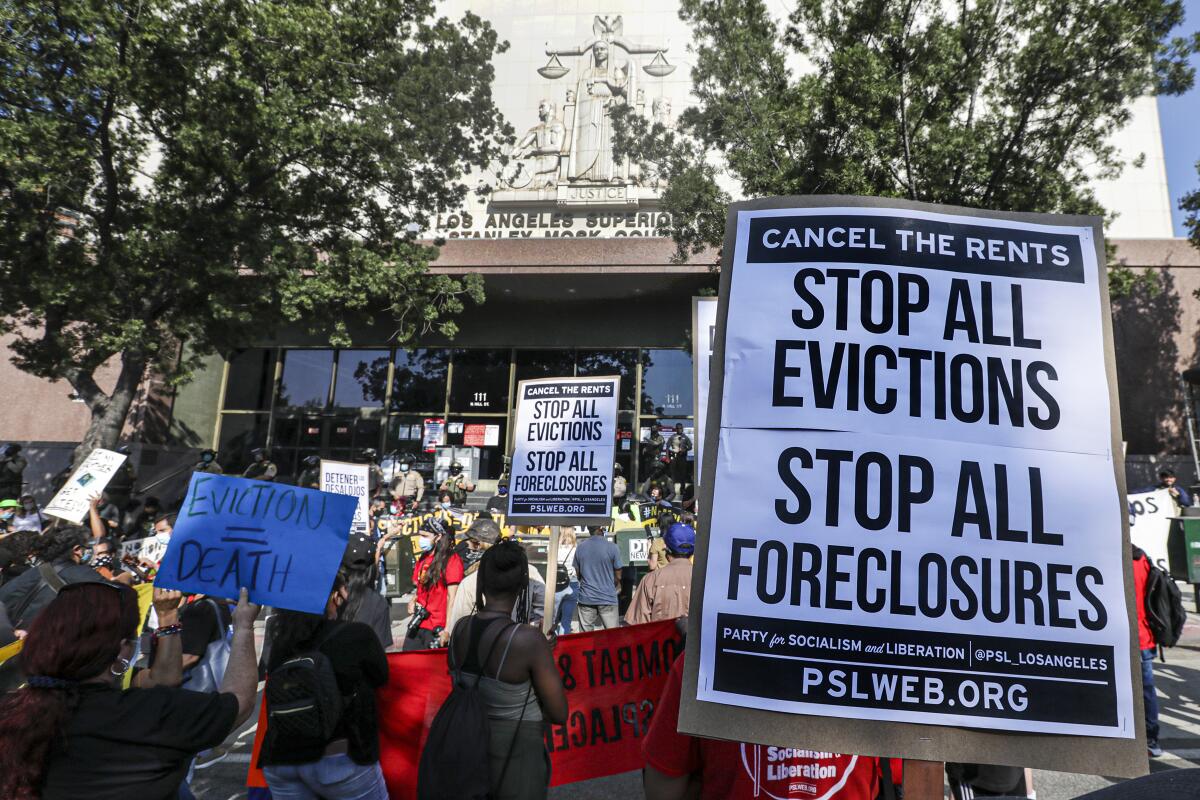
- Share via
Since March 2020, tenants in Los Angeles affected by the COVID-19 pandemic have been allowed to skip their rent payments without triggering an eviction. That emergency rule will expire Jan. 31, ending one of the last eviction moratoriums in the nation.
There’s no doubt that L.A.’s eviction moratorium prevented struggling low-income tenants who fell behind on rent from becoming homeless during the pandemic. Eviction filings in L.A. County dropped 66% in 2020 compared with the year before, according to an analysis by a postdoctoral fellow at UCLA who researches evictions. And experts cite the moratorium as a major reason why there wasn’t a bigger increase in homelessness during the February 2022 count of people living on the street and in shelters, despite the economic and societal upheaval of the previous two years.
As the moratorium ends, there will be vulnerable tenants on the edge of losing their home. And though the city is fast-tracking more construction, it will take years until there’s enough housing to create a stable rental market. In the meantime, city leaders need to help keep people from falling into homelessness by enacting stronger legal protections for tenants against evictions before the moratorium ends and more financial support for landlords to cover their losses.
Homeless numbers rose significantly less in the past two years. Experts say if we want them not to shoot up again, keep tenant protections in place.
The Los Angeles City Council is considering worthwhile proposals that expand tenant protections to all rental properties. They include a requirement that all landlords show “just cause” — such as failure to pay rent or a lease violation — before evicting a tenant or pay a relocation fee for no-fault evictions. In some cases, relocation payments could be required when the landlord raises the rent more than 10% in a year.
Just-cause eviction and relocation payments are already required for rent-controlled apartments in L.A. (those built before 1978), which total about 624,000 units. The proposals are an effort to standardize and expand tenant protections. Currently, there are different protections for different properties and gaps in which some tenants have no protections, such as in apartments built within the last 15 years and about 129,000 single-family homes.
These are common-sense measures that provide stability to responsible tenants in one of the country’s least affordable real estate markets. There are too many tenants who are one steep rent increase or unwarranted eviction from ending up on the streets.
If Bass and her staff can keep up this pace and speed up permanent housing projects, then the city could see a transformation on the streets.
Landlord groups are opposed to expanding tenant protections. Their aversion is somewhat understandable — the eviction moratorium was an extraordinary infringement on their business. Property owners were forced to go months, years in some cases, without rent payments. The moratorium limited their ability to evict for some lease violations, such as moving in additional tenants or pets.
Many landlords in the city with low-income tenants had some or all of the back rent paid thanks to more than $1.3 billion in aid from the state and federal governments; it was the first major rent relief program launched in the U.S., and it kept countless people afloat. But the funding didn’t reach every property owner, including those whose tenants refused to fill out the paperwork or earned too much. Although rent debt will come due this year, many landlords will never be fully reimbursed, and many feel as though government has left them holding the bag. That’s a problem.
Los Angeles leaders have an interest in keeping landlords in the rental business. They provide an essential service — housing — one that L.A. needs a lot more of. The majority of landlords in the city are small operators with four or fewer units; they may not have the means to take a financial loss, and the frustration of the last few years could prompt more mom-and-pop operators to sell their properties to investment firms that may seek higher profits.
There’s a vast informal economy of unpermitted homes in L.A. and some leaders want to make it easier to bring those units into compliance.
Mayor Karen Bass told The Times’ editorial board that she supports expanding tenant protections, but she also wants to protect property owners, especially the mom-and-pops. Yet neither she nor council members have proposed landlord assistance programs or targeted help for property owners who didn’t get state and federal relief. That should be part of the discussion too. (Some landlords aren’t exactly helping the situation; voters approved Measure ULA, a tax on high-value property sales, that will provide ongoing funding for emergency rental assistance to help tenants and landlords, but the Apartment Assn. of Greater Los Angeles has sued to block the tax from taking effect.)
The longer-term solution is to build more homes for people at all income levels, which will ease demand and stabilize prices. In the meantime, the shortage of housing, especially affordable housing, leaves tenants vulnerable. If they lose their housing, it’s extraordinarily difficult and expensive in this market to find a new rental. In recent years, a record number of homeless people have been placed into housing; yet there hasn’t been a meaningful decrease in people living on the street because more people are becoming homeless, often for the first time, as a result of economic stress, such as rising rent, a lost job or an eviction.
The eviction moratorium will end. But the lessons of the pandemic cannot be forgotten: Renter protections, rent relief and landlord assistance can keep tenants housed and landlords in business.
More to Read
A cure for the common opinion
Get thought-provoking perspectives with our weekly newsletter.
You may occasionally receive promotional content from the Los Angeles Times.
